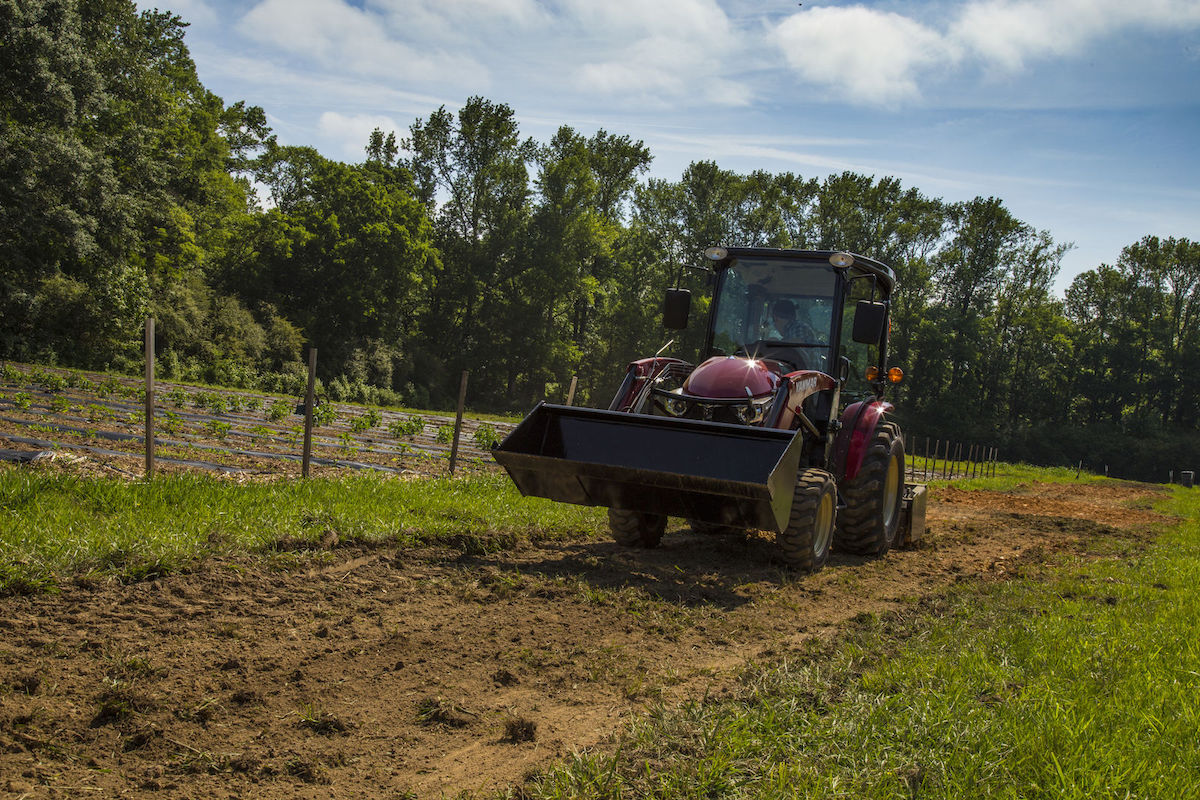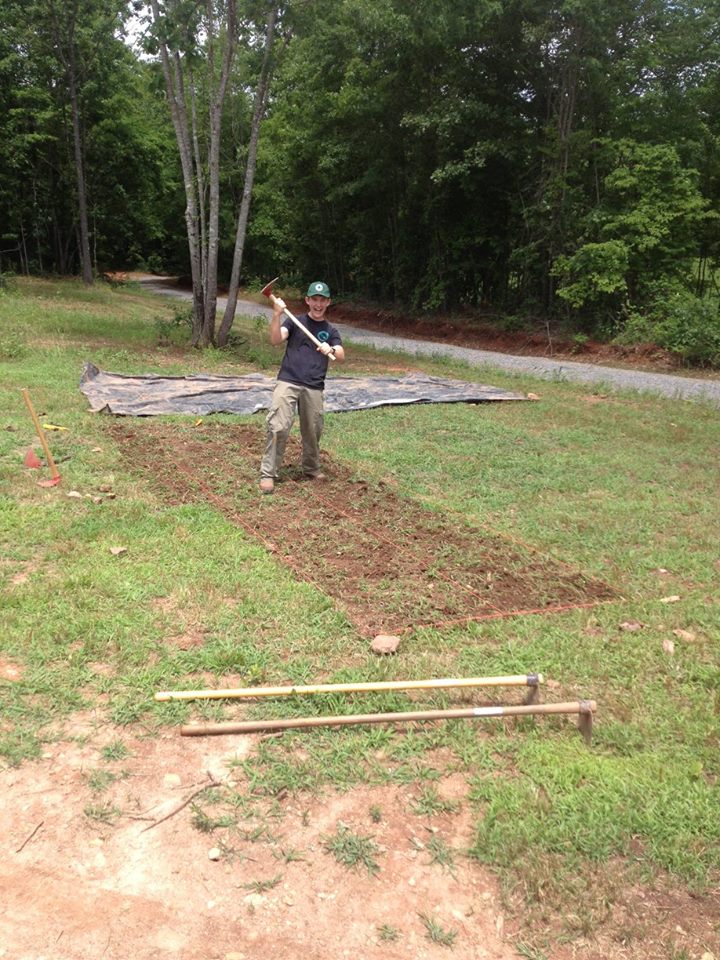As an Amazon Associate, I earn from qualifying purchases.
Preparing soil for planting can make a huge difference. A garden tiller helps you do this efficiently.
But how do you get started? Using a garden tiller is essential for healthy soil. It helps break up the ground, improving air and water flow. This allows plant roots to grow better. Before you start, it’s important to know the steps involved.
This guide will walk you through the process. From checking your soil type to using the tiller correctly, you’ll learn everything you need. Get ready to transform your garden soil into a fertile bed for your plants. With the right preparation, your garden will thrive. So, let’s dive into how you can prepare your soil with a garden tiller.

Credit: www.yanmartractor.com
Choosing The Right Garden Tiller
There are different types of garden tillers. Front-tine tillers are good for small gardens. Rear-tine tillers are stronger and can handle bigger jobs. Electric tillers are light and quiet. Gas-powered tillers are heavy and powerful. Choose the one that fits your needs best.
Think about the size of your garden. A small garden needs a small tiller. A large garden needs a big tiller. Look at the soil type too. Hard soil needs a strong tiller. Soft soil can use a lighter tiller. Ease of use is important. Make sure you can handle the tiller comfortably. Cost is also a factor. Choose a tiller that fits your budget.

Credit: www.smilinggardener.com
Understanding Soil Types
Soil types are important for planting. Clay soil holds water well but can be heavy. Loam soil is a mix of sand, silt, and clay. It is best for most plants. Sandy soil drains quickly but does not hold nutrients well. Each soil type has different needs. Knowing your soil helps your plants grow better.
Testing soil quality is easy. Use a soil test kit from a garden store. Follow the instructions. Check the pH level. Most plants like a pH of 6 to 7. Test for nutrients like nitrogen, phosphorus, and potassium. Good soil has all three. Adjust soil based on test results. Add compost to improve soil quality.
Preparing The Soil
First, remove any large rocks. They can damage the garden tiller. Use a rake to gather small stones. Check for any tree roots. Cut them with garden shears.
Pull out all weeds by hand. Make sure to get the roots. Use a hoe for stubborn weeds. Collect all plant debris in a bucket. This keeps the soil clean. The area should look neat and tidy. Now, the soil is ready for tilling.
Using The Garden Tiller
Start by removing large rocks and debris from the soil. This prevents damage to the tiller. Mark the area you plan to till. This helps keep your rows straight. Adjust the depth setting on your tiller. Shallow for soft soil, deeper for hard soil. Move the tiller slowly across the soil. Let the machine do the work. Overlap your rows slightly. This ensures even tilling.
Wear gloves to protect your hands. Use ear protection to guard against noise. Check the tiller for loose parts before you start. Keep children and pets away from the area. Do not wear loose clothing. It can get caught in the machine. Turn off the tiller before making adjustments. This prevents accidents.
Improving Soil Fertility
Adding organic matter helps soil hold water. It also boosts nutrients. Use compost, leaves, or grass clippings. Spread them over the soil. Then, use the garden tiller to mix them in. This helps plants grow strong. Also, it keeps the soil healthy.
Fertilizers give plants the food they need. Choose the right type for your plants. Some fertilizers are for flowers. Others are for vegetables. Read the label carefully. Follow the instructions. Spread the fertilizer evenly. Then, till the soil to mix it in. This helps plants get the nutrients they need.
Maintaining Your Garden Tiller
Always clean your garden tiller after use. This prevents rust. Use a brush to remove dirt from the blades. Wipe it down with a damp cloth. Dry it thoroughly before storing it. Store the tiller in a dry place. This helps to avoid damage.
Check the oil level often. Add oil if it is low. Sharpen the blades regularly for better performance. Tighten any loose bolts to ensure safety. Inspect the air filter. Clean or replace it as needed. Keep the tiller in good shape for longer use.
Common Mistakes To Avoid
Over-tilling can harm your soil. It can break down soil structure. This leads to compacted soil. Plants find it hard to grow in compacted soil. Use the tiller only when needed. Avoid tilling too deep. Keep an eye on the soil texture.
Soil conditions matter a lot. Wet soil is hard to till. It can damage your tiller. Dry soil can be too hard. Check the soil before tilling. Moist soil is best for tilling. It is easy to work with. It helps in better growth of plants.

Credit: redeemingthedirt.com
Expert Tips For Successful Planting
Spring is the best time to till your garden. The soil is usually moist but not wet. This makes it easier to work with. Tilling when the soil is too wet can make it clumpy. Dry soil can be hard and tough to till.
Vegetables like carrots and potatoes need loose soil. This helps their roots grow better. Flowers often need well-drained soil. This keeps their roots from rotting. Herbs do best in soil that is not too rich. This makes their flavors stronger.
Frequently Asked Questions
What Is A Garden Tiller Used For?
A garden tiller breaks up soil, making it easier to plant and grow plants.
How Deep Should I Till The Soil?
Till the soil about 6 to 8 inches deep to ensure healthy root growth.
When Is The Best Time To Till My Garden?
Spring is the best time to till, before planting your garden.
Can I Till Wet Soil?
Avoid tilling wet soil. It can lead to clumping and poor soil structure.
Do I Need To Remove Weeds Before Tilling?
Yes, removing weeds before tilling helps prevent them from spreading and competing with your plants.
Conclusion
Preparing soil with a garden tiller helps plants grow better. It loosens compact soil, making it easier for roots to spread. Start by removing rocks and debris from the area. Then, use the tiller to break up the soil. Add compost or fertilizer for extra nutrients.
Tilling ensures soil is well-aerated and ready for planting. Follow these steps, and your garden will thrive. Happy gardening!
